Is Colt Making the Python Again
Colt's legendary revolver returns to product…better than always
by Bob Campbell
I suppose the Rick Grimes graphic symbol from The Walking Dead did every bit much for the six-inch barrel stainless steel Filly Python as Dirty Harry's Harry Callahan did for the Smith and Wesson Model 29. Nevertheless while the show has deteriorated, the Python keeps getting amend. Post-obit its 2005 hiatus, Filly reintroduced the new-and-improved Python in 2020, reasonably priced at about $1500.
The cheers of hard-core wheel gun fans have notwithstanding to subside nigh 2 years afterward.
The price of a new Colt Python .357 Magnum revolver has no begetting on the toll of a collector-grade Python. The older pistols, if new in the box or lightly used, should keep their value. Overpriced, well-worn Pythons are just shooters not worth the usual asking price.
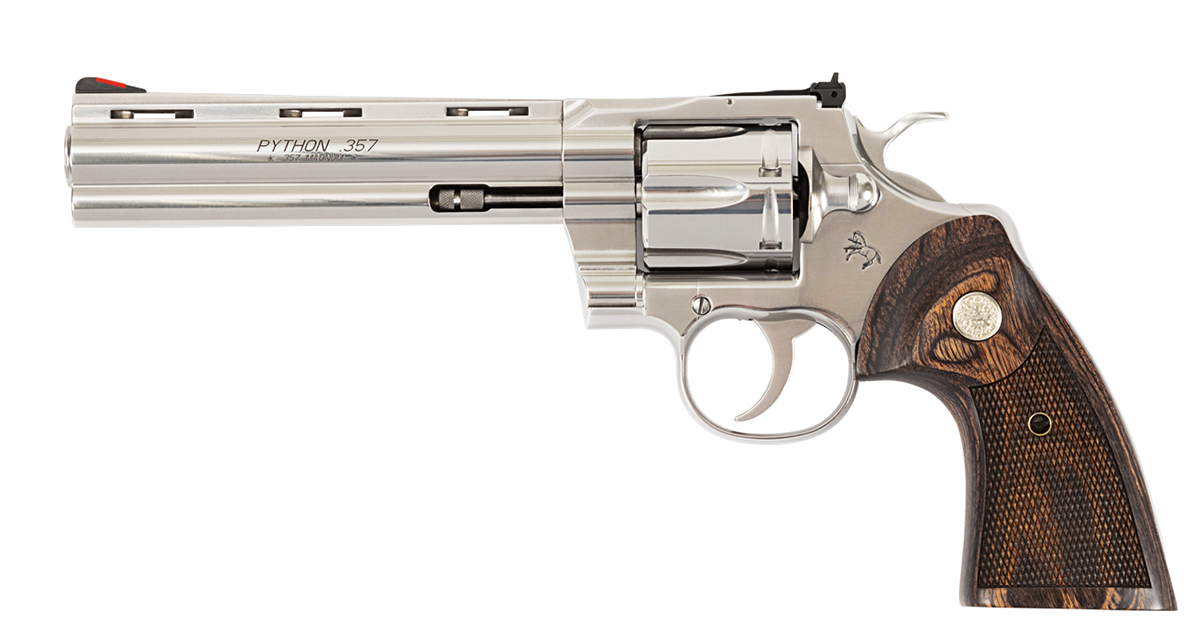
The new Python is a better revolver. I hear the ache. I am a Colt fan but an honest one as well. I like the old guns and I capeesh the sense of history and emotional attachment. If you desire a Python that left the factory the year you were built-in, that is a keen thing. If, similar me, you are a shooter, then you lot volition desire a new Python. I don't think the cost is an impediment. You are purchasing one of the finest—if not the finest—revolvers ever made. You are getting into this handgun somewhat more cheaply than a Les Baer or Wilson Gainsay 1911, but yous are at the top of the heap when it comes to Magnum revolvers.
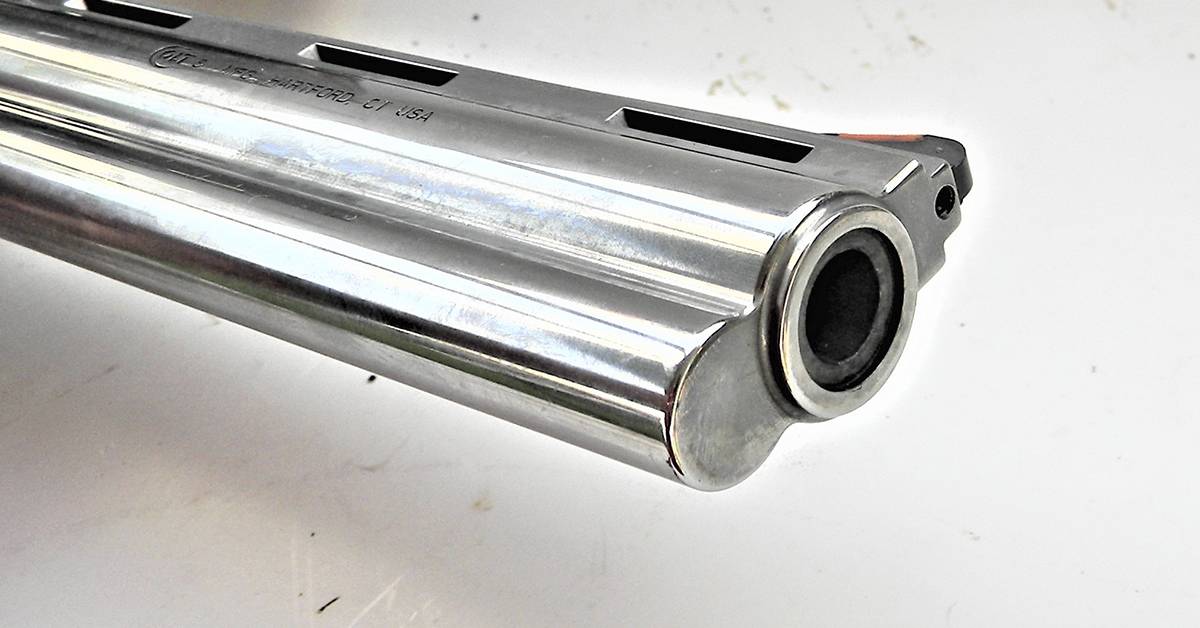
The original Python was a strengthened and improved revolver based on the Official Police frame. This is oft called the .41 frame. Information technology is larger than the Smith and Wesson Thou frame just smaller than the N frame—a practiced residue of strength and treatment. The Python features a heavy under-lugged barrel. The sights are fully adaptable. The main advantage of the Python is a beautifully tuned action. The Majestic Blue or nickel end was expert and so were the highly polished stainless-steel versions. The Python is among the best-counterbalanced handguns e'er manufactured. I ofttimes bear my original iv-inch butt Python. It is fast on the draw and fast on target. There is nothing similar the Python for quick double-action work. The original Python was manufactured primarily with a four- or a vi-inch barrel. Two-and-one-one-half- and eight-inch butt versions are less mutual. There are the five-inch barrel rarities likewise. The new Python is stainless steel and so far, the 6-inch butt seems far more than mutual. I accept yet to examine a 4-inch barrel version.

Colt's adventurous introduction has maintained the outline and contour of the original equally well as the butter smooth action. I feel that CNC machinery and modern precision has allowed Filly to industry a revolver with a lighter trigger activeness than the original while maintaining reliable ignition. This is a trick that has eluded many custom revolver smiths.
A business with the original revolver was a lockup that transferred recoil energy to the activity. This showed upwardly in loftier-circular-count revolvers. Filly'due south tight lockup suffered more than other revolvers but maintained exceptional accuracy. The new activity is smoother only more rugged. The frame is beefed up equally well. At that place is nada wrong with the Ruger GP100 revolver and I believe Colt took a hard expect at the GP100—another .41 frame revolver—in designing the new Python to exist all information technology can be.
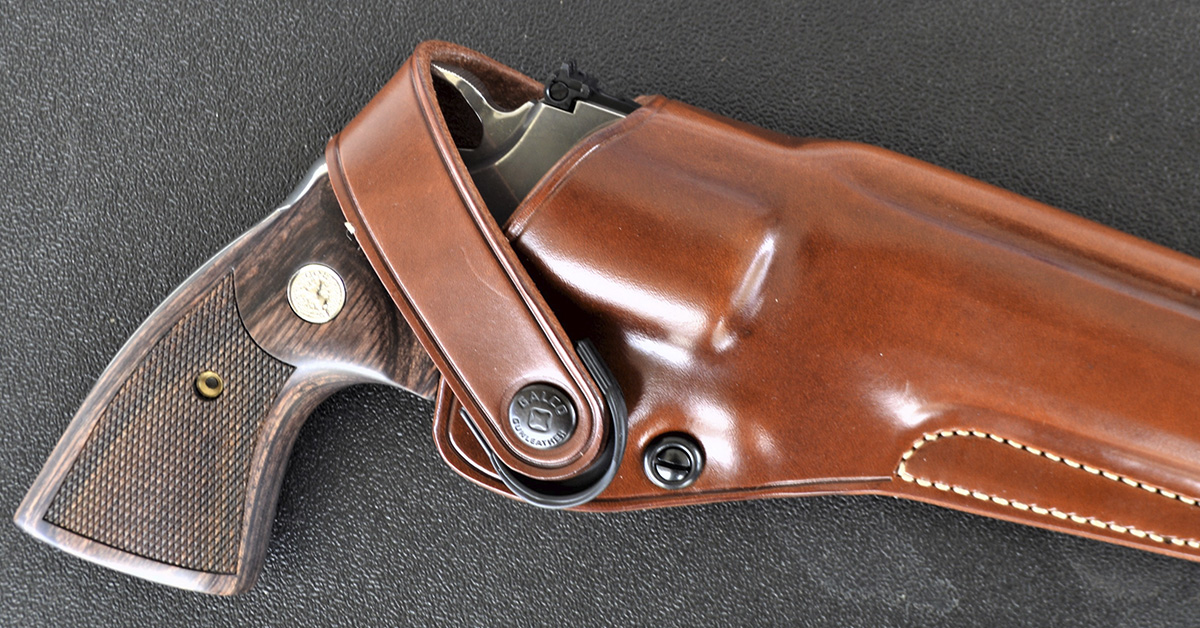
The rear sight is a more than robust design than the original and the forepart sight is removeable. The barrel features a well-washed recessed crown. The handle geometry is slightly changed. I find this an comeback that makes for a superior firing angle. I also like the new Python grips. They offer good hand fit in both double-activity and single-action fire. I adopt the classy, checkered pattern from Deer Hollow but the new Python blueprint is certainly useful. The new grips feature several positioning pins and are very tight from the factory.
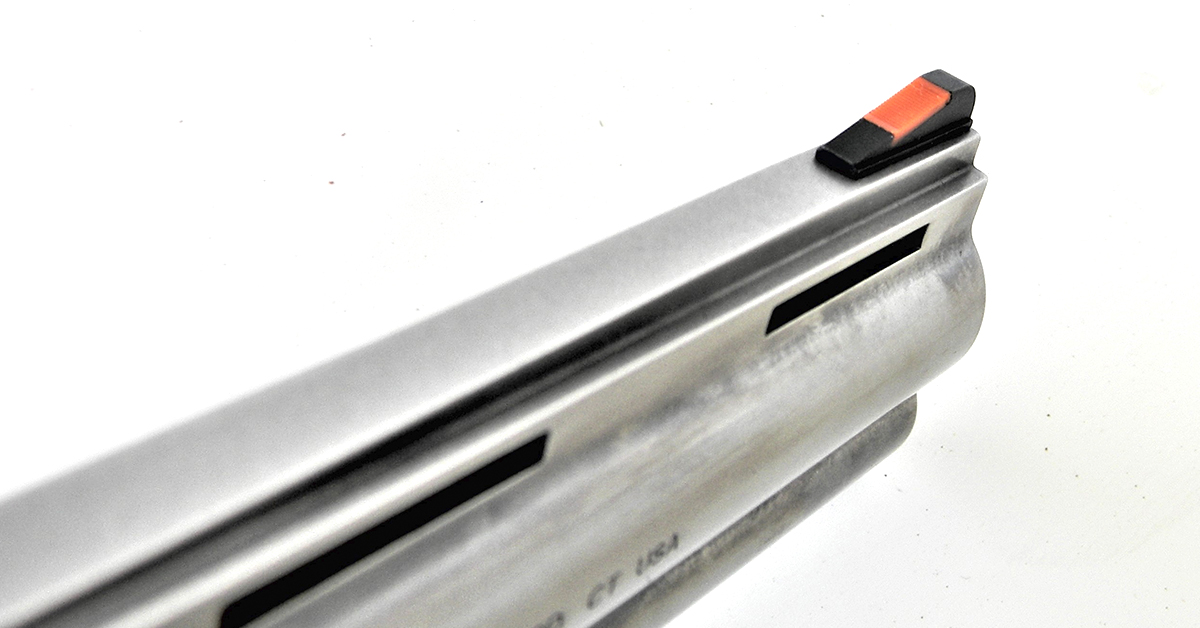
The updated 6-inch Python passes muster on every point of examination. The real test is firing. I had some concern the action may exist too low-cal to crack harder primers, but these fears proved unfounded. The revolver has been completely reliable. I accept fired a expert mix of .38 and .357 Magnum loads. I bask handloading and the Python compliments a careful handloader.
At that place have been folks who say the new Python locked upwardly on them. The Colt handles differently than a Smith and Wesson. The Smith has a return spring that presses the trigger dorsum in place. The Colt is powered only past the V spring. If you practice not allow the Colt trigger to fully return, it volition, indeed, lock up. The cure is to but release the trigger all the way forward afterwards firing. The technique is uncomplicated. Printing the trigger smoothly to the rear. Equally the revolver fires, allow the trigger to fully reset during recoil. As you lot re-align the sights, begin the trigger press again.
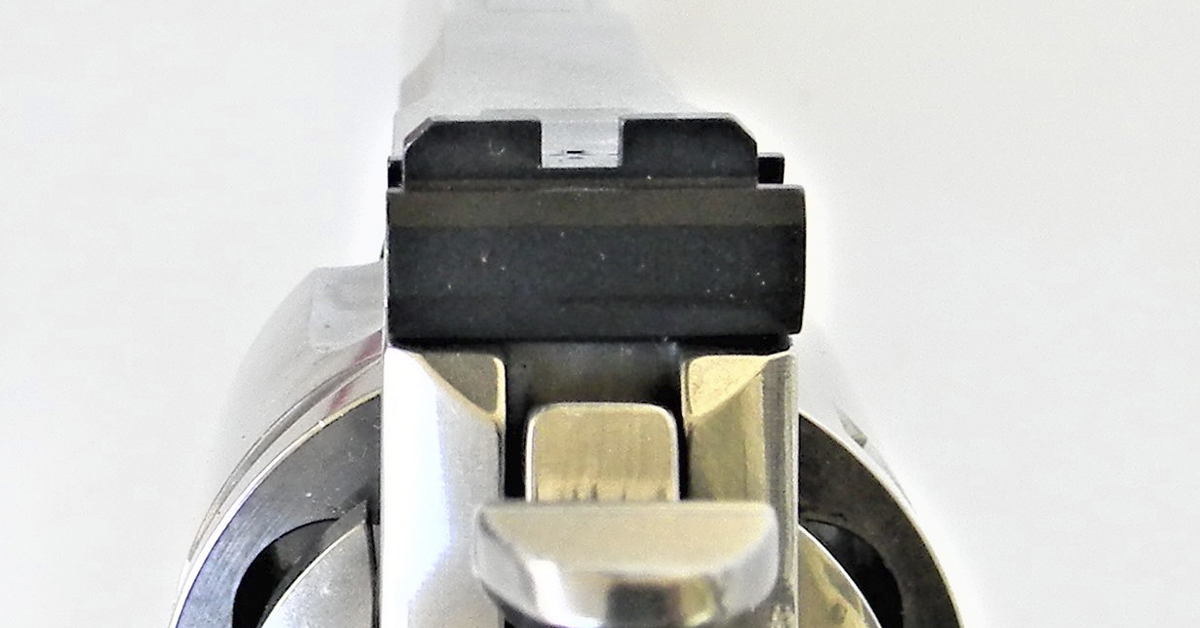
In double-action burn, in that location were no surprises. A six-inch barrel .357 Magnum revolver hangs on the target and doesn't recoil very much. Keep up a rhythm with the trigger and y'all volition destroy the target's Ten ring. This is why the Python ruled PPC matches as an out-of-the-box competitor. The .38 Special is a well-balanced and accurate cartridge. Miserly with gun pulverization and more powerful than about allow it credit, the .38 Special is a fine all-around target, defense, and outdoors cartridge.
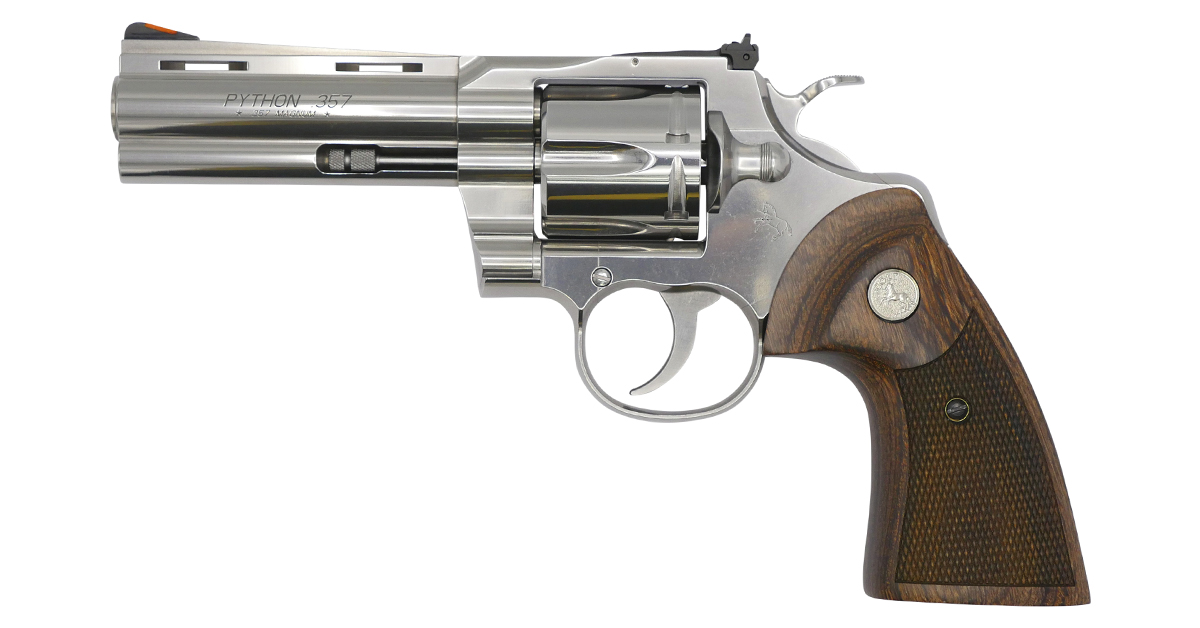
The vi-inch butt .357 Magnum is sometimes chosen a rifle on the hip. I tested the new half-dozen-inch barrel Python against a vintage four-inch barrel Python. The new gun is more than accurate, but a half dozen-inch barrel Python should exist. Velocity with the longer barrel is equally much every bit 180 fps greater than the iv-inch barrel, simply not with every load. The Black Hills Ammunition 158 grain JHP gained simply ten anxiety per second in the longer barrel. There are exceptions, just as a rule, the longer butt generates greater velocity and a longer sight radius makes for greater accuracy potential.
I like the new Python. Love it or not, or resent the changes, the Colt Python is now bachelor for shooters wishing to own a superior revolver.
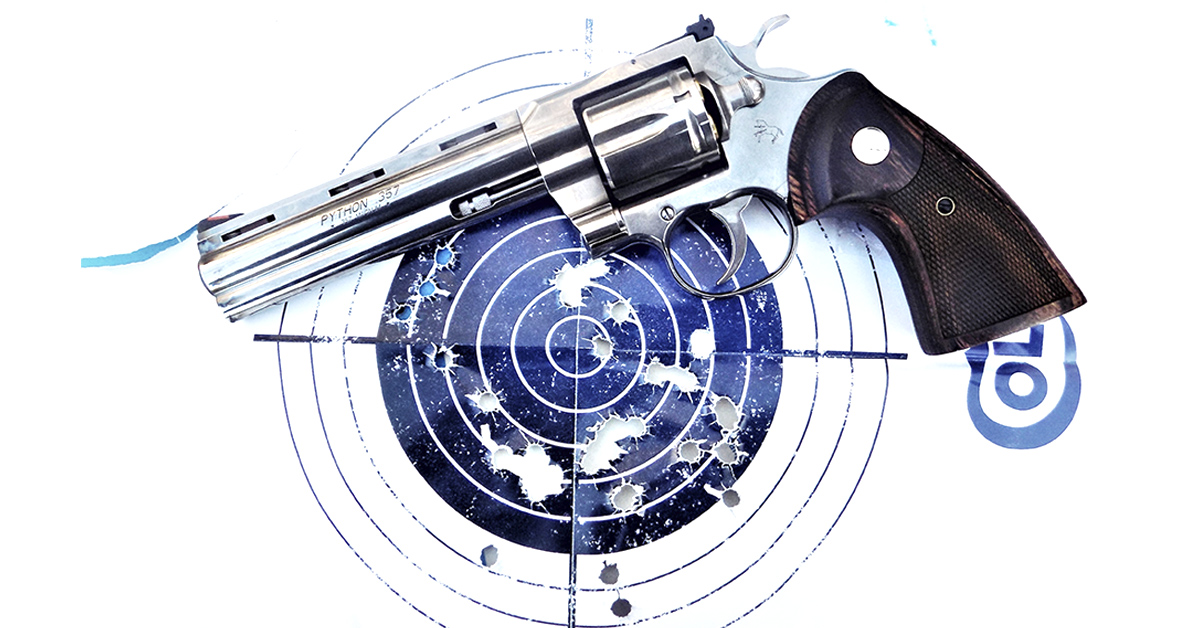
Accuracy Testing
This examination employed v-shot groups at 25 yards.
.38 Special
- Buffalo Bore Outdoorsman 158 grain SWCHP; 1129 fps; 1.nine in
- Blackness Hills Ammunition 158 grain cowboy; 802 fps; ii.iii in
- 196 grain Matt's Bullets/WW231/Titegroup; 690 fps; 2.0 in
.357 Magnum
- Fiocchi 158 grain XTP; 1162 fps; 1.0 in
- Black Hills Ammunition 158 grain JHP; 1272 fps; one.0
- Black Hills Ammunition 125 grain JHP; 1503 fps; 1.ii in
- Winchester 158 grain JHP; 1379 fps; 1.25 in
- Buffalo Bore 180 grain JHP; 1380 fps; 1.25 in
- Winchester 145 grain Silvertip; 1316 fps; i.iv in
- Black Hills Armament 127 grain Honey Badger; 1478 fps; 1.5 in
Handloads
- 125 grain Hornady XTP/W296; 1550 fps; ane.0 in
- 180 grain Hornady XTP/H110; 1210 fps; 1.0 in
- 158 grain Hornady XTP/H110; 1308 fps; 1.two in
- 173 grain Matts Bullets SWC/H110; 1160 fps; one.25 in
- 125 grain Hornady XTP/H110 MAX, 1638 fps; one.65 in
1977 Python, four-inch butt
- Fiocchi 158 grain JHP; 1090 fps; 1.6 in
- Black Hills Ammunition 127 grain Honey Badger; 1411 fps; 1.7 in
- Black Hills Ammunition 125 grain JHP; 1390 fps; i.nine in
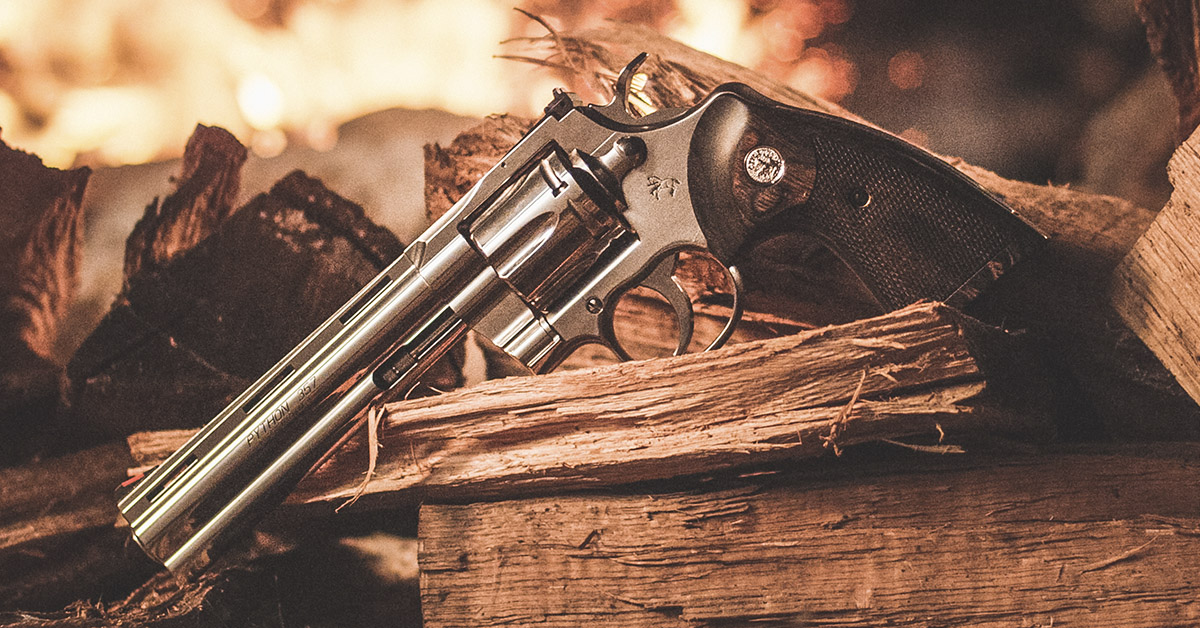
Source: https://shoot-on.com/field-test-the-new-colt-python/